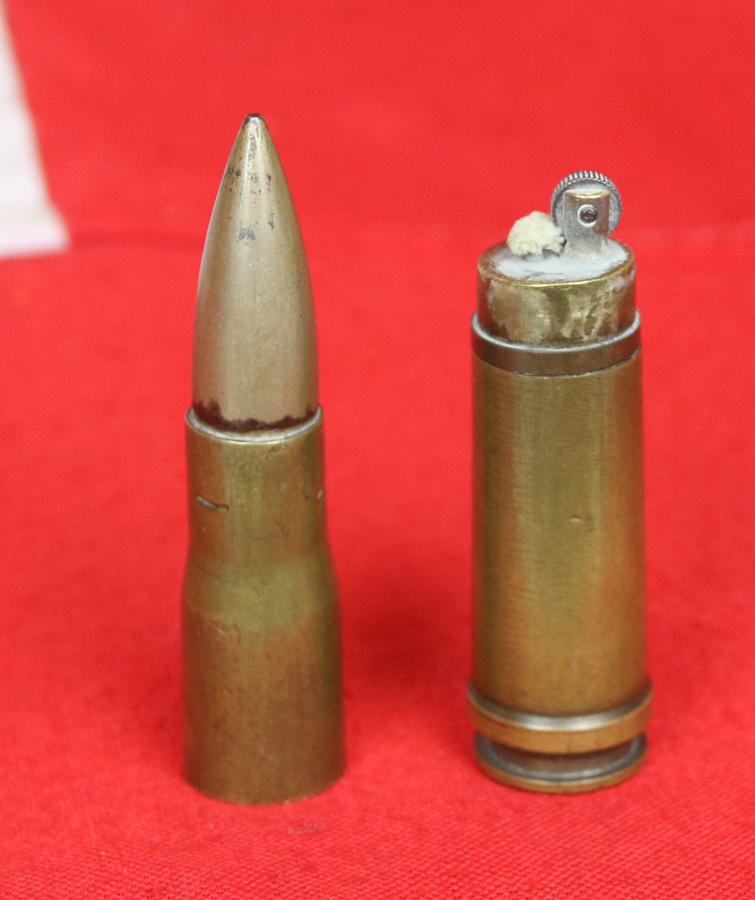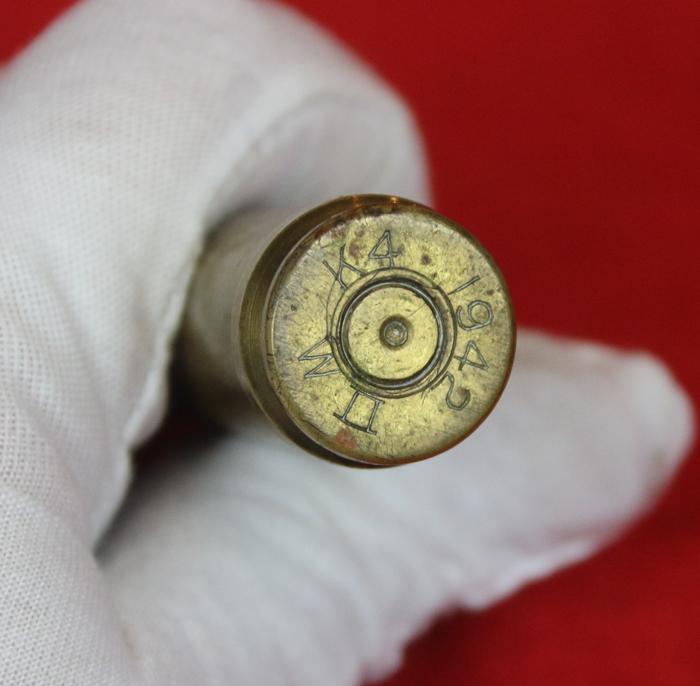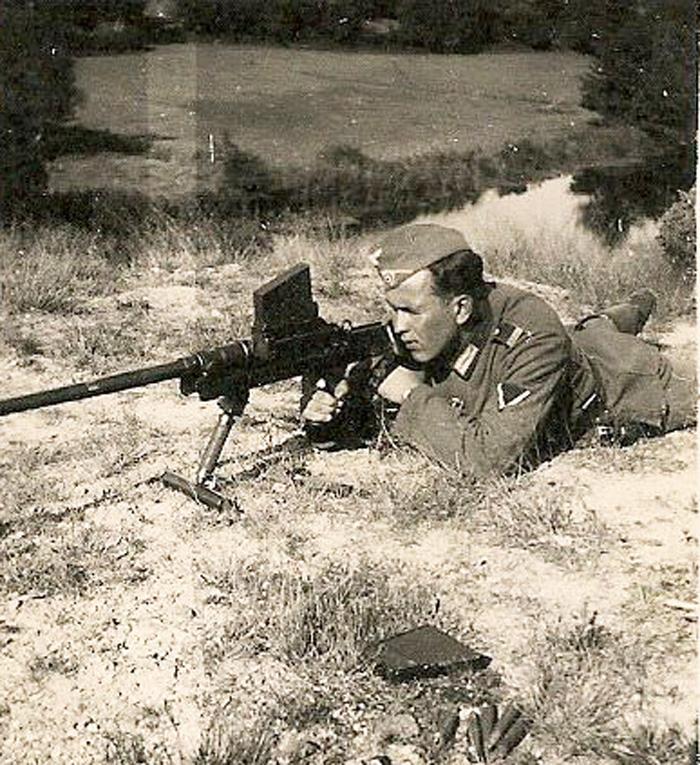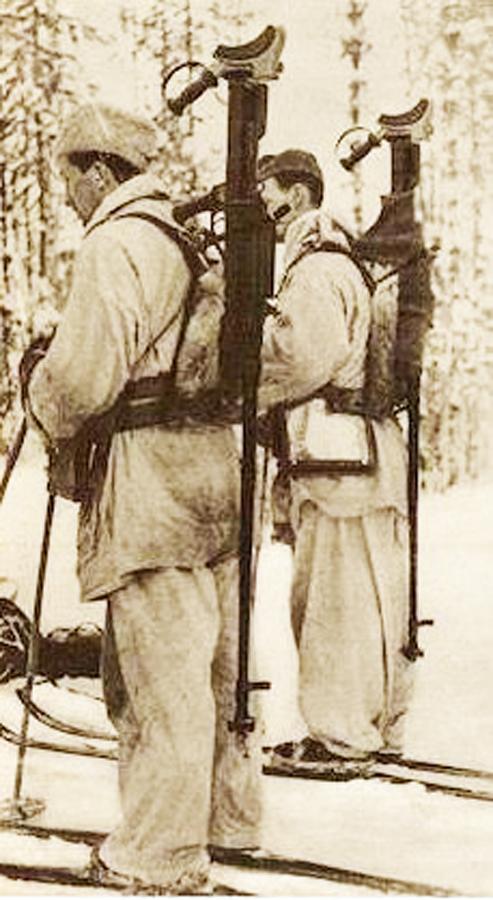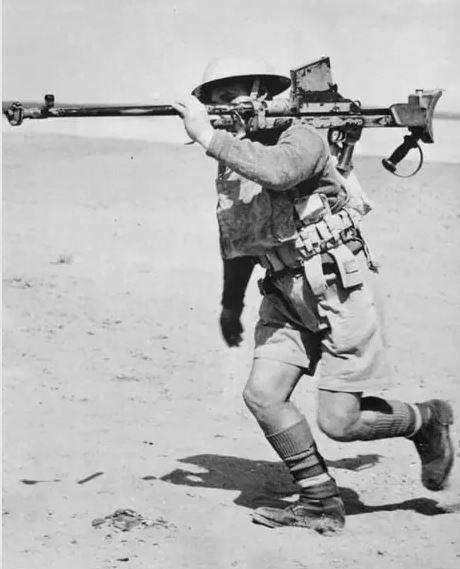A Most Rare, 'Trench Art', .55 Boys Anti Tank Rifle Round 1942, Converted Into a Soldier's Desert Rat Period Campaign Cigarette Lighter
As you might be aware, being a militaria and specialist bookshop for over 100 years we have had all manner of examples of ‘trench art’. It is known principally for artefacts and souvenirs made by our boys in the trenches of the first world war, and later in the second. Small pieces of military, discharged kit, artillery shell cases, bullet shell cases, and simply pieces of brass metal that were ‘hanging around, could be converted, with a little skill and effort, into useful or decorative items, for the folks back home. The creation all manner of curious pieces were constructed, from paperknives, butter knives, miniature tanks, to planes, miniature hats, dinner gongs, or armoured cars. in fact all manner of souvenirs for their loved ones. A relatively popular item was the petrol cigarette lighter, which was mostly made for their own immediate use, usually created from discharged bullets, or very small shellcases. They were no doubt extremely useful, in fact pretty much vital, especially during the privations of life in the wet and intolerable confines of a trench, in the days where smoking was nigh on compulsory.
Trench art continued to be made into the Second World War, but was not made in the same quantities as it was in WW1. The Second World War war was far more mobile, and not static as it was in the first world war, with little or no ‘down time’, unlike WW1, what with areas of trenches being maintained and occupied by soldiers of both sides, sometimes for months or even years on end.
Over the years we have seen many types of lighter but a Boys tank bullet converted to a lighter has to be one of the rarest we’ve seen, in fact I can’t remember the last one, it has possibly even as long as 40 to 50 years ago.
A .55 Boys Mark 2 Anti-Tank Rifle.55 Boys Mark 2 1942 Dated Anti-Tank Rifle Round, converted to use as a piece of functional, servicemen's, 'trench art', a useful lighter on campaign. The rifle developed by Captain H C Boys, a designer at the Royal Small Arms Factory, Enfield resulting in the .55 Boys anti-tank rifle being adopted in 1937. Although the round was adequate against light tanks in the early part of the war, the Boys was ineffective against heavier armour and was phased out in favour of the PIAT mid-war. During the early campaigns, like Norway and France, the Boys performed adequately against the thinly armored Panzer I, II and IIIs. The first German tanks knocked out by British troops were by a Boys during the Norwegian campaign. Sergeant Major John Sheppard of the 1/5th Battalion, Leicestershire Regiment (TA) was deployed near the village of Tretten to help protect the right flank when three German Panzers approached his position. Taking up the Platoon’s Boys, which he had never used before, Sheppard fired three rounds into each tank, knocking out two of them and making the rest third retreat. For his actions that day, which helped keep the right flank of the British position solid, he was awarded the Distinguished Conduct Medal.The Boys anti-tank rifle was a bolt action rifle fed from a five-shot magazine, loaded by means of a 5 round stripper clip. The rifle was large, heavy with a bipod at the front and a separate grip below the padded butt. The Boys anti tank gun was also made in Canada and sold to America, we sold it to Russia, and Finland, and many thousands were captured at Dunkirk by the German's and issued by their special anti tank units. See photos in the gallery of the British Desert Rats using in against Rommel in Africa, the Finns using it against the Russians in the Finish Russian Winter War, and by the Germans in WW2. Not suitable top export due to bullet shape.
Code: 24019
135.00 GBP


